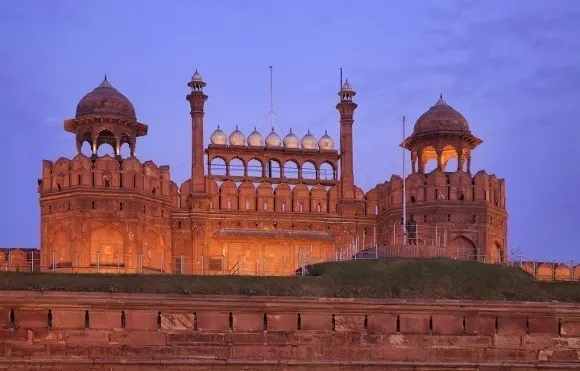Red Fort
 The Red Fort, located in Delhi, India, is an iconic symbol of the country’s rich history and Mughal architecture. Constructed by the Mughal Emperor Shah Jahan in the 17th century, it served as the main residence of the Mughal emperors for nearly 200 years.
The Red Fort, located in Delhi, India, is an iconic symbol of the country’s rich history and Mughal architecture. Constructed by the Mughal Emperor Shah Jahan in the 17th century, it served as the main residence of the Mughal emperors for nearly 200 years.
The fort gets its name from the red sandstone walls that surround it, which stretch over two kilometers and rise up to 33 meters in height. Within its imposing walls lie several exquisite structures, including palaces, halls, gardens, and pavilions, all built in a fusion of Persian, Timurid, and Indian architectural styles.
The most famous structure within the Red Fort is the Diwan-i-Aam (Hall of Public Audience), where the emperor would address the general public and conduct administrative affairs. Another notable building is the Diwan-i-Khas (Hall of Private Audience), adorned with intricate marble inlays and once used for private meetings and receptions.
The fort also houses the beautiful Rang Mahal (Palace of Colors), which served as the residence for the royal women, and the Mumtaz Mahal, a white marble palace named after Shah Jahan’s beloved wife.Every year on India’s Independence Day (August 15th), the Prime Minister hoists the national flag and delivers a speech from the ramparts of the Red Fort, a tradition that symbolizes the country’s sovereignty and freedom.
Today, the Red Fort is a UNESCO World Heritage Site and a popular tourist attraction, drawing visitors from around the world who come to marvel at its grandeur, learn about its history, and experience the rich cultural heritage of India.
